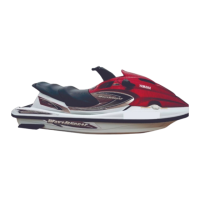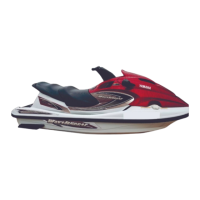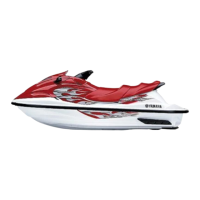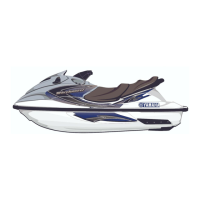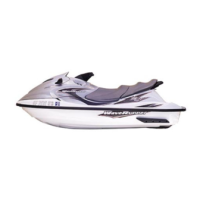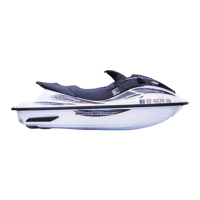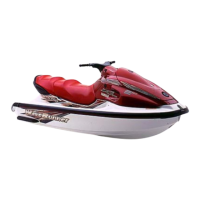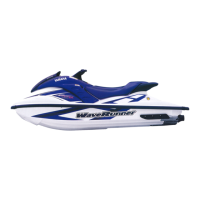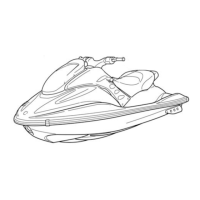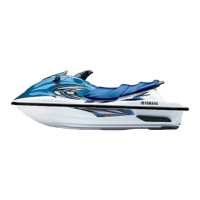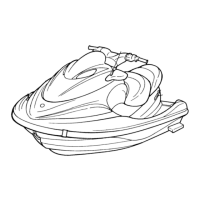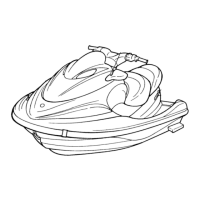Do you have a question about the Yamaha WaveRunner XLT1200 2001 and is the answer not in the manual?
Details PRI-ID, HIN, and engine serial numbers for identification and registration purposes.
Explains engine conformity to U.S. Environmental Protection Agency (EPA) regulations for marine SI engines.
Illustrates the location and types of various warning, caution, and other labels affixed to the watercraft.
Covers crucial safety guidelines for operation, including limitations on operators and safe cruising practices.
Outlines navigation rules for safe operation and interaction with other vessels on the water.
Provides information on obtaining further boating safety resources and education from official organizations.
Identifies key parts of the watercraft and their purpose through diagrams and labels.
Details the usage of all controls, indicators, and features for operating the watercraft.
Explains engine overheat, exhaust temperature, fuel, oil, and battery warning and indicator systems.
Details the location, capacity, and load limits of the front, glove, and seat storage areas.
Covers gasoline requirements, refueling, and 2-stroke engine oil specifications and filling.
Essential safety procedures to perform before each use of the watercraft for safe and reliable operation.
Guides on engine break-in, starting, stopping, riding, maneuvering, and handling emergencies.
Procedures to follow after operating the watercraft to ensure proper care and prevent damage.
Guidelines for safely transporting the watercraft on a trailer, including securing the craft.
Procedures for storing the watercraft for extended periods, including winter storage and preventative maintenance.
Essential maintenance to prevent clogging of cooling passages with salt, sand, or dirt.
Details on lubricating various cables and points for smooth operation and to prevent corrosion.
Covers inspection and maintenance of the fuel filter, fuel tank, and related components for safety.
Instructions for checking, maintaining, and storing the watercraft battery to ensure readiness.
Schedule outlining recommended maintenance intervals and tasks for owner and dealer.
Guidance on inspecting, cleaning, adjusting, and replacing spark plugs for engine performance.
Instructions for adjusting the carburetor, specifically focusing on setting the trolling speed.
Technical data and specifications for the watercraft model, including dimensions and engine details.
Guide to identifying and resolving common operational issues and problems with the watercraft.
A table listing common troubles, their possible causes, remedies, and corresponding page references.
Steps to take in critical situations like jet intake clogs, dead batteries, towing, or submerged craft.
Procedure for removing debris that may clog the jet intake or impeller, causing performance loss.
Instructions for starting the engine using jumper cables from another battery when the watercraft battery is dead.
Guidelines for safely towing a disabled watercraft to shore using a tow line.
Procedures to follow if the watercraft becomes submerged or flooded to prevent engine damage.
Details the terms, conditions, and exclusions of the water vehicle limited warranty.
Information about purchasing extended service plans for additional coverage beyond the limited warranty.
An alphabetical listing of topics and their corresponding page numbers for easy reference.
| Manufacturer | Yamaha |
|---|---|
| Model | WaveRunner XLT1200 |
| Year | 2001 |
| Category | Boat |
| Displacement | 1176 cc |
| Seating Capacity | 3 persons |
| Starting System | Electric |
| Hull Material | Fiberglass |
| Engine Type | 2-stroke |
| Cooling System | Water-cooled |
| Fuel Delivery | Mikuni BN44 carburetors |
